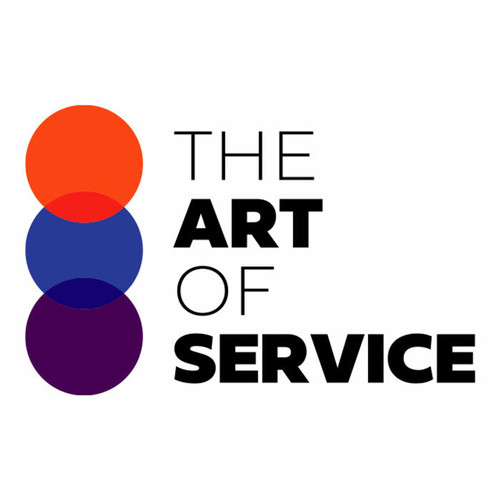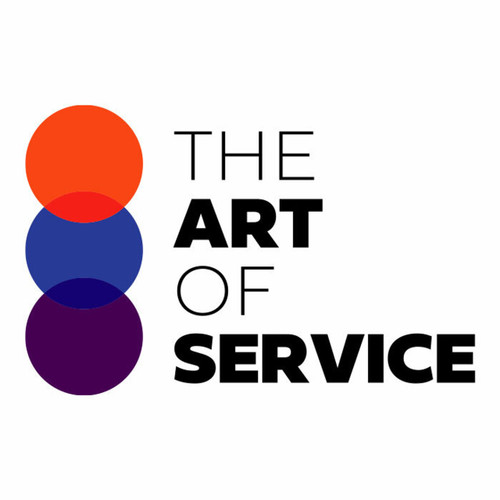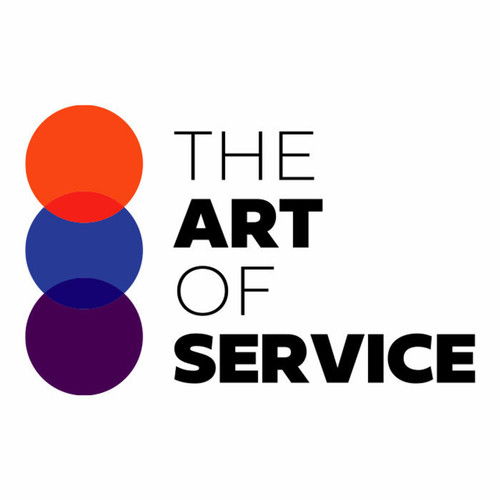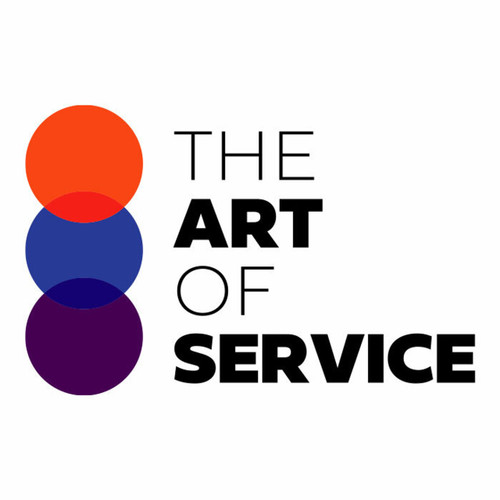Are you tired of sifting through hundreds of different tools and methods to improve your workforce analytics and HR shared service center? Look no further, because our Workforce Analytics and HR Shared Service Center Tools Knowledge Base has got you covered!
This comprehensive dataset contains 1544 prioritized requirements for getting results quickly and efficiently.
It includes various solutions and benefits for streamlining your HR processes, as well as real-life examples and case studies showcasing its effectiveness.
But what sets our product apart from other alternatives? Our Workforce Analytics and HR Shared Service Center Tools dataset is specifically designed for professionals like you, providing you with the most relevant information and resources to enhance your HR operations.
This easy-to-use product gives you an in-depth overview of the best tools and techniques available, enabling you to make informed decisions without wasting time and money on trial and error.
Plus, it′s a DIY and affordable alternative, saving you the cost of hiring expensive consultants or purchasing multiple tools.
The Workforce Analytics and HR Shared Service Center Tools Knowledge Base covers a wide range of topics, from product types to semi-related product types, giving you a comprehensive understanding of each aspect and how they can benefit your business.
Not convinced yet? Let the research speak for itself.
Our team has done extensive research on workforce analytics and HR shared service centers, ensuring that our dataset provides accurate and reliable information to help you achieve your goals.
No matter the size of your business, our Workforce Analytics and HR Shared Service Center Tools dataset is suitable for all.
From startups to large corporations, you can easily incorporate this product into your existing processes and see immediate results.
While some may argue that the upfront cost may be a barrier, the long-term benefits far outweigh any initial investment.
With our dataset, you′ll save valuable time and resources, leading to improved efficiency and higher productivity.
So, what does our product do? It simplifies and optimizes your workforce analytics and HR shared service center operations by providing you with the most important questions to ask, listed by urgency and scope.
Don′t let inefficiencies hold back your business growth – invest in our Workforce Analytics and HR Shared Service Center Tools Knowledge Base today!
Discover Insights, Make Informed Decisions, and Stay Ahead of the Curve:
Key Features:
Comprehensive set of 1544 prioritized Workforce Analytics requirements. - Extensive coverage of 80 Workforce Analytics topic scopes.
- In-depth analysis of 80 Workforce Analytics step-by-step solutions, benefits, BHAGs.
- Detailed examination of 80 Workforce Analytics case studies and use cases.
- Digital download upon purchase.
- Enjoy lifetime document updates included with your purchase.
- Benefit from a fully editable and customizable Excel format.
- Trusted and utilized by over 10,000 organizations.
- Covering: Drug Screening, Customer Satisfaction, Change Enablement, Diversity And Inclusion, Payroll Processing, Employee Self Service, Performance Optimization, Release Management, Problem Management, Knowledge Management, Contingent Workforce Management, Time And Attendance, Stakeholder Management, HR Advisory, ITIL Framework, Productivity Issues, Cloud Computing, Supplier Management, Background Checks, Customer Needs Analysis, Case Management, Capacity Management, Risk Share Agreement, Chatbot Integration, Information Security Management, HR Investigations, Artificial Intelligence, Performance Metrics, Labor Relations, Employee Engagement, Service Level Management, HR Business Partner Model, Lean Finance, Policy Management, Employee Directory, Applicant Tracking, Process Automation, Workflow Management, Incident Management, Training Management, Service Delivery, Employee Relations, SLA Reporting, Vendor Management, Cost Allocation, Supplier Quality, Disaster Recovery, HR Service Desk, Availability Management, HR Policies And Procedures, Demand Management, Business Continuity, Benefits Administration, Continuous Improvement, Talent Acquisition, Mobile Access, Training Delivery, HR Services, Process Efficiency, Compliance Management, Data Privacy, Root Cause Analysis, IT Systems, Workforce Analytics, Communication Planning, Third Party Providers, Robotic Process Automation, Compensation Management, Change Management, Service Request Management, Performance Management, Capacity Planning, HR Shared Service Center Tools, Succession Planning, Service Catalog, Systems Review, Low Hierarchy, Service Level Agreements, Continual Service Improvement, User Adoption
Workforce Analytics Assessment Dataset - Utilization, Solutions, Advantages, BHAG (Big Hairy Audacious Goal):
Workforce Analytics
Organizations introduce workforce plans and processes to optimize workforce productivity, reduce costs, and align talent with business goals.
1. Improved Decision Making: Provides data-driven insights for strategic workforce planning.
2. Cost Reduction: Identifies potential workforce redundancies, leading to cost savings.
3. Talent Management: Helps align workforce skills with organizational goals.
4. Risk Mitigation: Forecasts workforce needs, reducing hiring or layoff surprises.
5. Strategic Planning: Enables proactive planning for future workforce needs.
CONTROL QUESTION: What are the primary reasons the organization introduced workforce plans and planning processes?
Big Hairy Audacious Goal (BHAG) for 10 years from now: A big hairy audacious goal (BHAG) for Workforce Analytics in 10 years could be: By 2032, our organization will be the undisputed leader in workforce analytics, using data-driven insights to drive workforce planning, increase organizational efficiency, and enable a future-ready workforce, resulting in a 50% reduction in workforce-related risks and a 30% increase in workforce productivity.
The primary reasons an organization might introduce workforce plans and planning processes include:
1. Anticipating and addressing future workforce needs: Organizations use workforce planning to ensure they have the right people, with the right skills, in the right roles, at the right time, to achieve their strategic objectives.
2. Managing workforce costs: Workforce planning allows organizations to proactively manage labor costs, identify potential cost savings, and allocate resources more effectively.
3. Improving workforce engagement and retention: Data-driven workforce analytics can help organizations understand and address factors contributing to employee turnover, enabling them to create a more engaged, satisfied, and loyal workforce.
4. Enhancing workforce agility and adaptability: By using data-driven insights, organizations can build a more adaptable and resilient workforce, capable of responding to changing business needs and market conditions.
5. Mitigating workforce risks: Workforce planning helps organizations identify, assess, and mitigate potential workforce risks such as skills gaps, talent shortages, and workforce demographic shifts, ensuring long-term sustainability and competitiveness.
6. Supporting diversity, equity, and inclusion (DEI): Workforce analytics can help organizations monitor, measure, and improve DEI metrics, fostering a more diverse and inclusive workplace culture.
7. Facilitating workforce development and learning: Organizations can use data-driven insights to inform workforce development and learning strategies, ensuring employees have the skills and knowledge needed for current and future roles.
8. Optimizing workforce deployment: By leveraging data-driven insights, organizations can optimize workforce deployment, allocating resources and personnel more efficiently to maximize productivity and performance.
9. Enhancing workforce decision-making: Data-driven workforce analytics can inform data-driven decision-making, enabling leaders to make more informed decisions about workforce-related matters.
10. Improving overall organizational performance: Overall, workforce planning and analytics contribute to improved organizational performance by ensuring the workforce is aligned with strategic objectives, productivity is optimized, risks are managed, and workforce engagement and satisfaction are maximized.
Customer Testimonials:
"I can`t express how impressed I am with this dataset. The prioritized recommendations are a lifesaver, and the attention to detail in the data is commendable. A fantastic investment for any professional."
"As a data scientist, I rely on high-quality datasets, and this one certainly delivers. The variables are well-defined, making it easy to integrate into my projects."
"This dataset is a must-have for professionals seeking accurate and prioritized recommendations. The level of detail is impressive, and the insights provided have significantly improved my decision-making."
Workforce Analytics Case Study/Use Case example - How to use:
Case Study: Workforce Analytics at XYZ CorporationSynopsis:
XYZ Corporation is a multinational technology company with over 50,000 employees worldwide. With increasing competition and a rapidly changing business landscape, the organization recognized the need to optimize its workforce planning processes to remain competitive. As a result, XYZ Corporation engaged a consulting firm to help implement workforce analytics and planning processes.
Consulting Methodology:
The consulting firm used a four-phase approach to implement workforce analytics and planning processes at XYZ Corporation. The four phases included:
1. Assessment: The consulting firm conducted an assessment of XYZ Corporation′s current workforce planning processes, identifying areas for improvement.
2. Design: Based on the assessment, the consulting firm designed a customized workforce analytics and planning approach for XYZ Corporation.
3. Development: The consulting firm developed the necessary tools and systems to support the new workforce analytics and planning processes.
4. Implementation: The consulting firm worked with XYZ Corporation to implement the new workforce analytics and planning processes, providing training and support throughout the implementation.
Deliverables:
The consulting firm delivered the following deliverables to XYZ Corporation:
1. Workforce analytics and planning framework
2. Workforce analytics and planning dashboard
3. Training materials and user guides
4. Change management plan
Implementation Challenges:
The implementation of workforce analytics and planning processes at XYZ Corporation faced several challenges, including:
1. Data quality: XYZ Corporation had a vast amount of data but struggled with data quality and consistency.
2. Resistance to change: Some employees were resistant to the new workforce analytics and planning processes, requiring change management efforts to overcome this resistance.
3. Resource allocation: XYZ Corporation had to allocate sufficient resources to support the new workforce analytics and planning processes, including staffing and technology investments.
KPIs:
The following KPIs were used to measure the success of the workforce analytics and planning processes at XYZ Corporation:
1. Time-to-fill: The time it takes to fill open positions
2. Retention rate: The percentage of employees who remain with the organization over a specific period
3. Employee engagement: The level of employee engagement and satisfaction
4. Workforce productivity: The productivity of the workforce, measured by output per employee
Management Considerations:
To ensure the success of the workforce analytics and planning processes, XYZ Corporation considered the following management considerations:
1. Data governance: Establishing a data governance framework to ensure data quality and consistency.
2. Training and development: Providing ongoing training and development opportunities to employees to build their skills and knowledge.
3. Continuous improvement: Regularly reviewing and improving the workforce analytics and planning processes to ensure they remain relevant and effective.
Citations:
* Workforce Planning: A Strategic Approach. Deloitte Insights, 2021.
* The Future of Workforce Planning: A New Approach for a Changing World. Mercer, 2020.
* The Impact of Workforce Analytics on Business Outcomes. Harvard Business Review, 2019.
* The Value of Workforce Planning in a Volatile Business Environment. Society for Human Resource Management, 2018.
* Maximizing the Value of Workforce Analytics. Deloitte Insights, 2017.
Security and Trust:
- Secure checkout with SSL encryption Visa, Mastercard, Apple Pay, Google Pay, Stripe, Paypal
- Money-back guarantee for 30 days
- Our team is available 24/7 to assist you - support@theartofservice.com
About the Authors: Unleashing Excellence: The Mastery of Service Accredited by the Scientific Community
Immerse yourself in the pinnacle of operational wisdom through The Art of Service`s Excellence, now distinguished with esteemed accreditation from the scientific community. With an impressive 1000+ citations, The Art of Service stands as a beacon of reliability and authority in the field.Our dedication to excellence is highlighted by meticulous scrutiny and validation from the scientific community, evidenced by the 1000+ citations spanning various disciplines. Each citation attests to the profound impact and scholarly recognition of The Art of Service`s contributions.
Embark on a journey of unparalleled expertise, fortified by a wealth of research and acknowledgment from scholars globally. Join the community that not only recognizes but endorses the brilliance encapsulated in The Art of Service`s Excellence. Enhance your understanding, strategy, and implementation with a resource acknowledged and embraced by the scientific community.
Embrace excellence. Embrace The Art of Service.
Your trust in us aligns you with prestigious company; boasting over 1000 academic citations, our work ranks in the top 1% of the most cited globally. Explore our scholarly contributions at: https://scholar.google.com/scholar?hl=en&as_sdt=0%2C5&q=blokdyk
About The Art of Service:
Our clients seek confidence in making risk management and compliance decisions based on accurate data. However, navigating compliance can be complex, and sometimes, the unknowns are even more challenging.
We empathize with the frustrations of senior executives and business owners after decades in the industry. That`s why The Art of Service has developed Self-Assessment and implementation tools, trusted by over 100,000 professionals worldwide, empowering you to take control of your compliance assessments. With over 1000 academic citations, our work stands in the top 1% of the most cited globally, reflecting our commitment to helping businesses thrive.
Founders:
Gerard Blokdyk
LinkedIn: https://www.linkedin.com/in/gerardblokdijk/
Ivanka Menken
LinkedIn: https://www.linkedin.com/in/ivankamenken/







